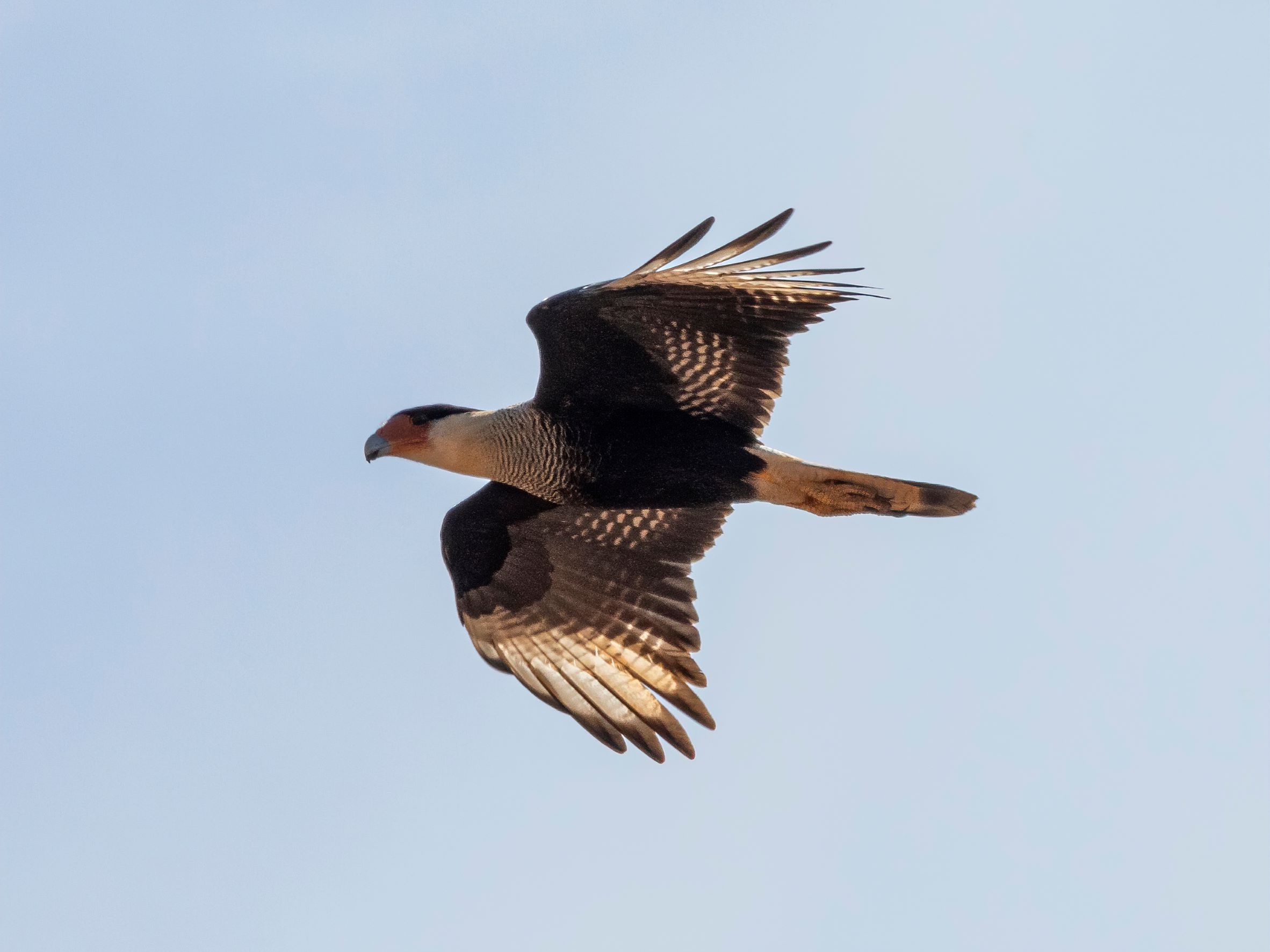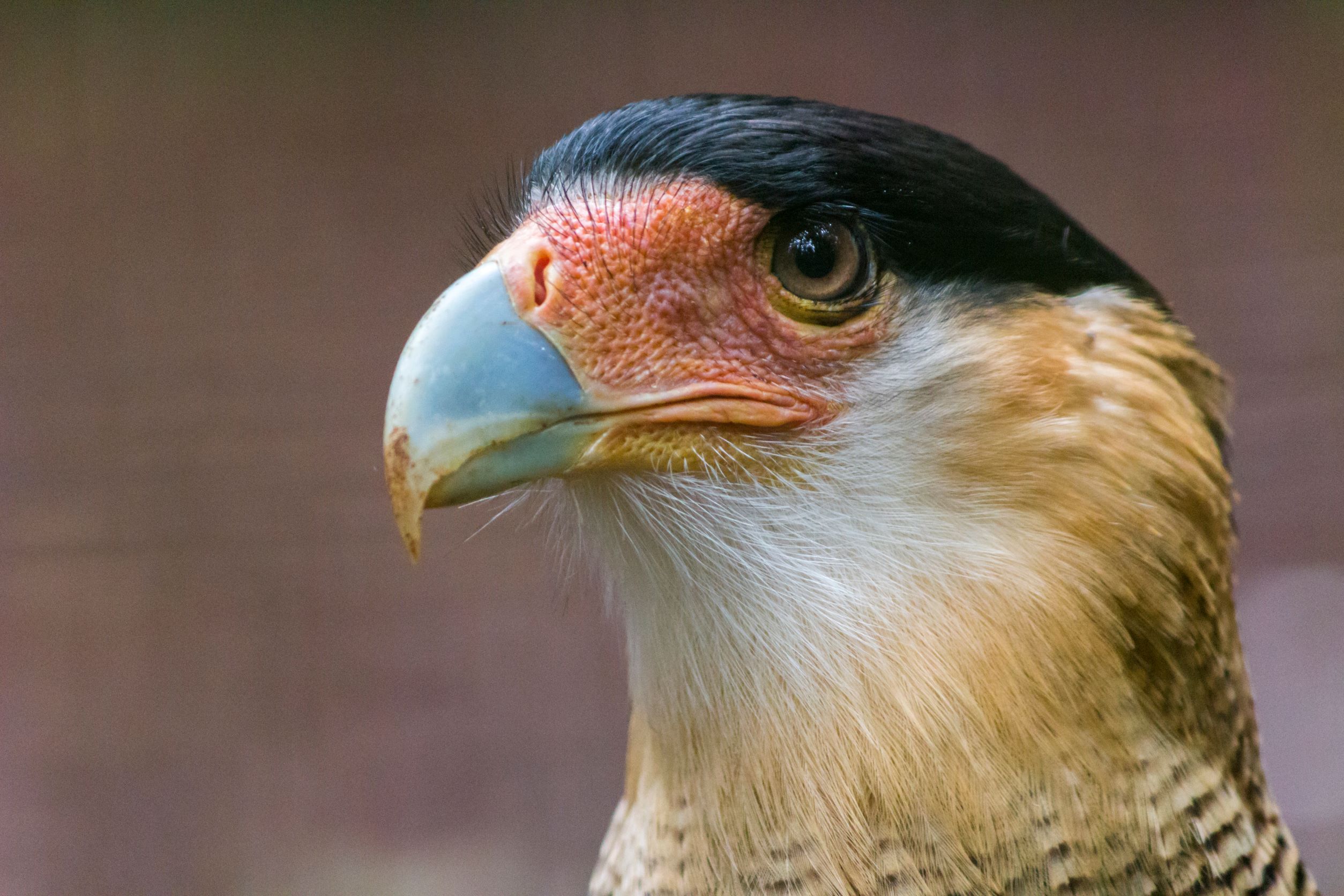 Ornithologist Adam Kent has studied birds throughout the world. He was Florida’s first scrub-jay conservation coordinator and assessed sites for the Great Florida Birding Trail. He’s even helped identify a new species, the Nava’s Wren, in Mexico.
Ornithologist Adam Kent has studied birds throughout the world. He was Florida’s first scrub-jay conservation coordinator and assessed sites for the Great Florida Birding Trail. He’s even helped identify a new species, the Nava’s Wren, in Mexico.
So, as much as he loves all birds, there’s one he finds particularly “cool.” The crested caracara.
By Joe Guidry
Caracaras are “beautiful, intelligent and fun to watch because of their diverse behavior,” he said.
Kent will give a presentation on caracaras at the Florida Birding and Nature Festival Oct. 15-17 at the TECO Manatee Viewing Center in Apollo Beach. The festival will offer field trips, exhibits, and zoom talks by wildlife experts.
The crested caracara is a bizarre-looking, long-legged bird with a black crest, white neck and a naked, reddish face. It looks a little cartoonish and because it is often sighted eating roadkill, many assume it to be some sort of dandified vulture.
In fact, the caracara is in the falcon family and Kent says its diet is far more varied than the vultures it sometimes chases away from a dead animal.
“Carrion,” Kent says, constitutes “usually less than a third of their diet in Florida.
“They eat anything animal from afterbirth to after death and everything in between.”
The caracara “can catch live prey as large as rabbits, small pigs or cattle egrets, though a large portion of their diet can also come from insects, which they sometimes find by turning over cow patties.”
If that sounds savvy, consider that Kent says the birds “even hunt larger prey cooperatively, with two birds chasing a rabbit or something of similar size.”
Their intelligence is reflected in their astute observation of their surroundings: “They know when you are watching them, even from a mile away, and will alter their flight paths to avoid detection if they want to.”

Smart and opportunistic, the crested caracara will “also eat fish and eggs, and have been observed feeding on pecans and cracked coconuts.”
Kent says they even eat a little vegetable matter.
The crested caracara is found throughout much of Central America and is sometimes called the Mexican eagle. It is one of nine caracara species that inhabit Central and South America.
Kent says Florida’s crested caracaras are here year-round. They mostly inhabit Central Florida, particularly the Kissimmee River Valley.
Kent explains why:
“Their population is centered around the south-central part of the state, south of Orlando and north of the Everglades, because these areas have the wide-open pastures and formerly held the dry prairies that are their preferred habitat, especially open areas with isolated cabbage palms.”
He says most Florida caracaras now are found on private “cattle ranches, where the cattle and planting with forage grasses keep the vegetation low.”
Kent says Florida’s crested caracara population probably has increased since the 1950s.
“They, as are most raptors, are doing better in the past half-century or so because hunting them has been outlawed and bioaccumulating pesticides such as DDT have been banned.”
But that does not mean the outlook for the bird is rosy.
“The caracara population is still low, and the high dry pastures with scattered palms where they nest are being converted quickly into housing developments and other land uses not compatible with caracara survival. They are also susceptible to getting hit by cars when they forage on carrion on roadsides.”
Sadly, habitat destruction might account for the increased sightings of the bird that was rarely observed decades ago.
“One reason people may be seeing more birds, in addition to a potential actual increase in their numbers, is that with all the new housing developments and new roads, areas with caracaras that were formerly inaccessible on private lands are now next to busy roads.”
Kent says beyond fragmenting and destroying caracara habitat, development also makes it difficult for natural land to be burned. Periodic burning provides the low vegetation the caracara requires for foraging.
Beyond man, threats to crested caracaras are few. However, “raccoons and crows sometimes get their eggs and eagles will steal food from them.”
Kent will cover many other details about this strange bird and other caracara species during his festival talk. He also recommends a book by Jonathan Meiburg, a writer and the lead singer and songwriter for the band Shearwater.
Meiburg became captivated with caracaras after encountering them in the Falkland Islands. His book’s title conveys precisely why so many expert birders like Kent find them extraordinary: “A Most Remarkable Creature: The Hidden Life and Epic Journey of the World’s Smartest Birds of Prey.”
Joe Guidry is the former editorial page editor of The Tampa Tribune and a member of the Florida Birding and Nature Festival Board.

